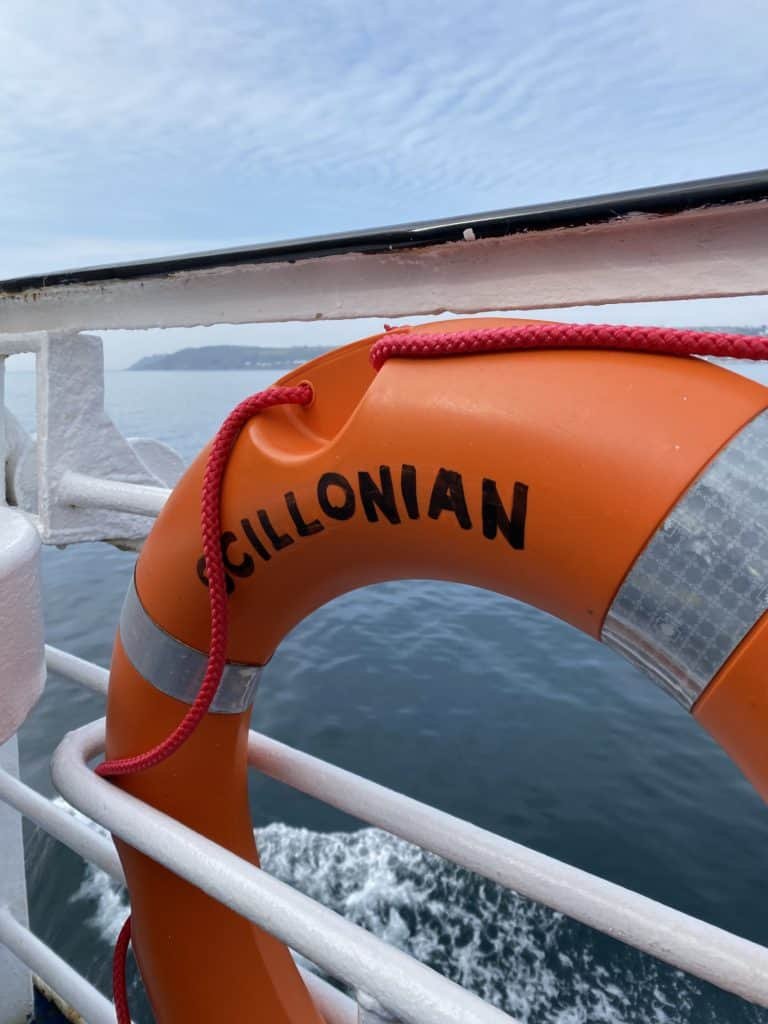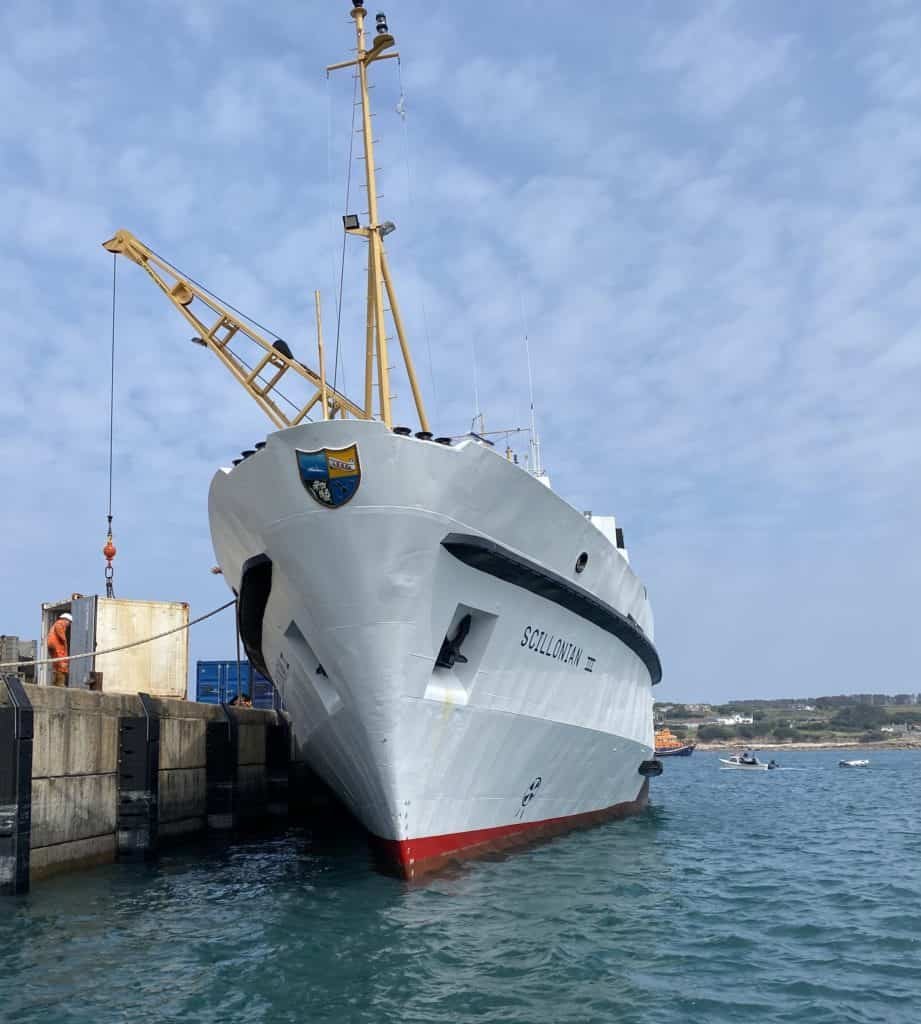A Visit To St Agnes - The Most Southerly of the Scilly Isles (Part 1)
As you step ashore on the Isles of Scilly you’d be forgiven for thinking you'd arrived below the equator. Or at least somewhere far further flung than just 28 miles from mainland UK. White sand beaches, tropical plants and abundant chatty wildlife thrive at every turn. And don't forget the turquoise seas that trick you into dipping your toes, wrongly expecting warmth. This archipelago of 145 islands, including my destination of St Agnes, sits off the coast of Cornwall. Close, but it feels like a different world.
Its remote beauty and thriving real-life communities are probably why it’s so loved by visitors. It’s an idyll, but one steeped in real history and with a working, thriving local population. It doesn’t feel cookie-cutter. The locals respect and need tourism, but they’re just as fiercely attached to their own culture, customs and local traditions.
Scilly - So Near But So Far
Geography naturally limits access to the islands and accommodation on them. The Isles of Scilly Steamship Company run a daily trip to and from Penzance (apart from Sundays). They travel in some of the wildest weather, and a tiny plane also goes back and forth throughout the year.
Once this transport is full, it's full! Without your own vessel you’re out of luck for a moment, leaving the islands with room to breathe for those who are there.
The Duchy of Cornwall, a private estate established in 1337 by Edward III and now in the care of Prince Charles, owns much of the land and property on the islands. With over a third of the homes in Duchy hands, there’s little risk of Scilly becoming an rattling graveyard of second homes; empty and barren in the winters. The properties are leased to Islanders, sometimes for many generations, safe in the hands of those who have long loved to live and work there.
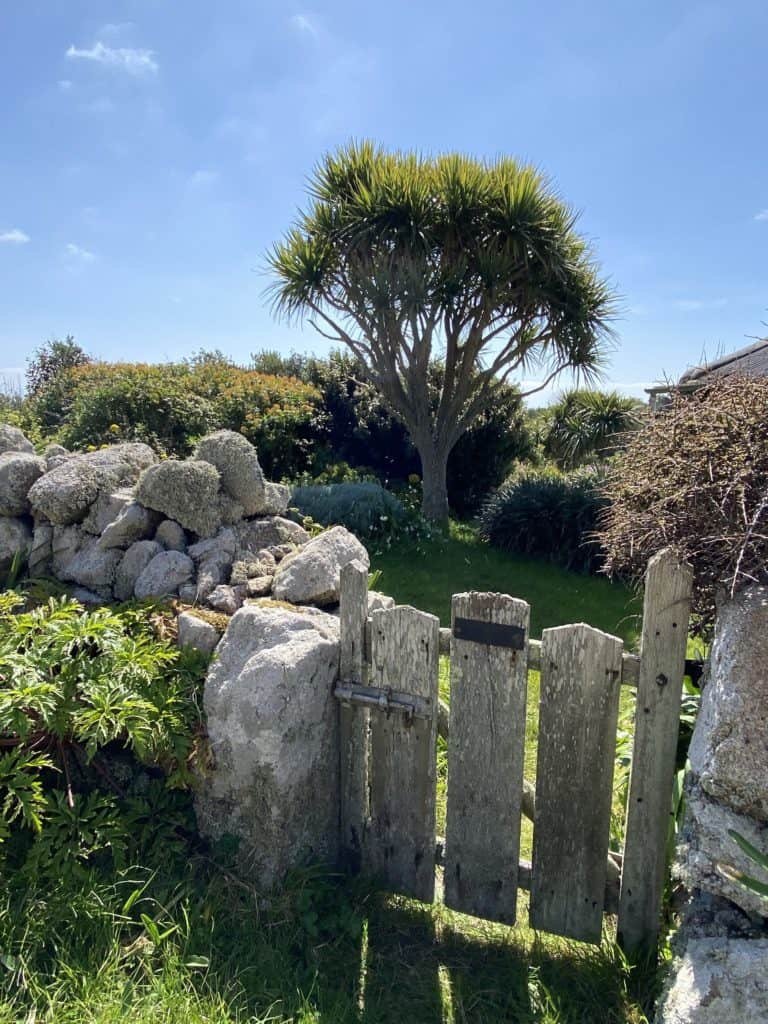
I was lucky enough to be able to stay in a local’s cottage on the off island of St Agnes, as my cousin Fergus married a lovely Islander. Her home and business remain on the island she grew up on. I’ve visited Scilly many times in my life, for everything from camping as a child to coxing and rowing in the World Gig Championships. But this was the first time I’d come to stay in a home where I felt more than just a tourist and I was extremely grateful. One day, perhaps I’d come and stay longer term, but on this trip I had just a few days. I was going to make the most of them
The Inhabited Isles
Of the 145 islands that make up Scilly, only 5 are inhabited. Bryher is the smallest of these at only half a mile wide. Next comes St Agnes (where I was heading). After that; St Martin, with a population of around 150 people, and then Tresco - the second largest at 1.15 square miles in size. Then, finally, the largest of the islands - St Marys. It was onto this main island that I was stepping off the ship The Scillonian after a pleasant 2 hour 45 minute crossing from Penzance.
When luggage is loaded into the small containers on Penzance quay, each bag is tagged with the off island it’s heading for. Then, once they’re unpacked again on St Marys they are piled on the quay. The bag piles tower next to where small local boats sit ready to whisk you to your destination.
The glorious process of loading up these inter-island boats hasn’t changed much since I was small. The skippers of these family-run boat companies organise passengers to make a chain. People then pass luggage down the stone quay steps and it doesn't take long to get everyone and everything aboard. The passengers duly follow their luggage down and are welcomed with smiles. A few hearty laughs behind face-masks, a dollup of hand sanitiser and we're off.
The Island of St Agnes
I was excited to arrive on St Agnes. I trundled my bag up the slip with a huge grin once we came alongside the tiny harbour wall. The trip from St Mary’s had taken just 15 minutes, but I already felt distant from real life concerns.
St Agnes is the most southwesterly island of Scilly. It's the very edge of England’s frontier, facing the raging seas that sit between the UK and North America. It’s small, perfectly formed and extremely tranquil. The population was recorded to be 82 people in 2011, but I am sure that figure ebbs and flows. People migrate to the mainland for work, or relocate back to the island seeking the peace it offers.
In the village
There are enough amenities on the island to keep you going if you forget to do a ‘big shop’ on the one smal supermarket on St Mary’s. I wasn’t to worry though, because the tiny Post Office was open and they stocked a wide range of delights from local fresh eggs, island beef and fresh vegetables as well as some rather lovely general groceries. Anything brought over isn’t cheap of course, but how could you expect it to be when it comes from so far afield?
I stocked up then returned to the Turk’s Head, the only pub on the island and purveyor of hearty good food as well as great cider. It was a sunny hour or two well spent before I found my way back to my cousin’s house and settled in for a solo evening watching the sun set over the rocky isles to the south west.
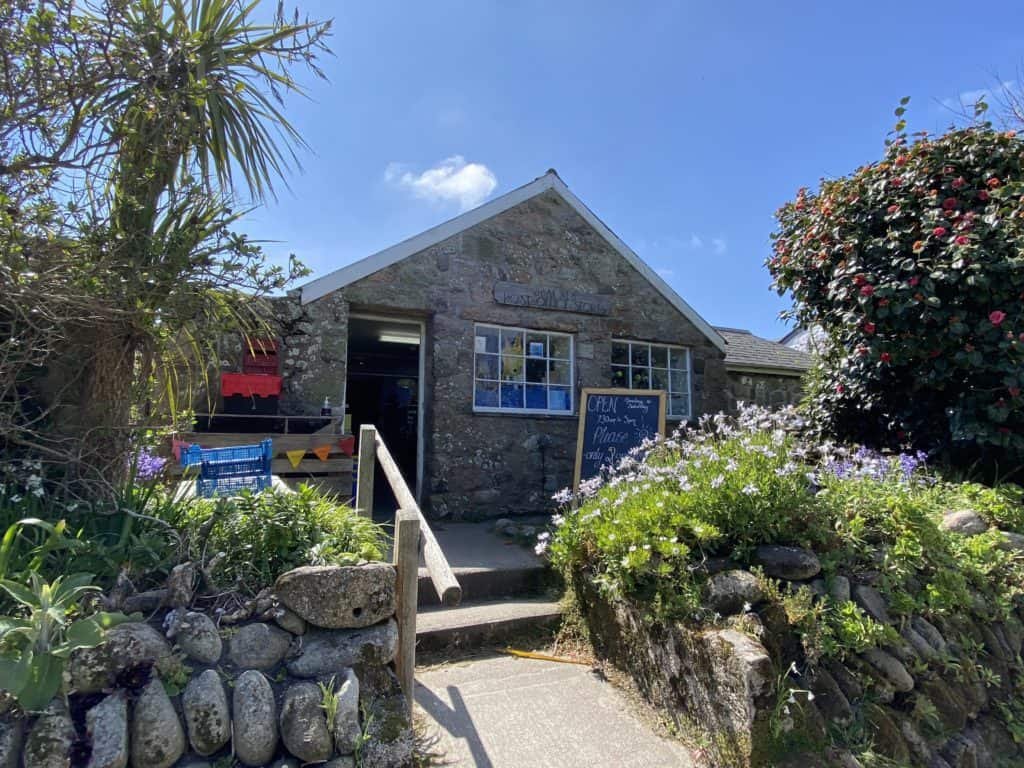
I had only a few days to spend here, and book writing to do in that time. Regardless, I visited as many places on the mile-wide island as I could. Here are a couple of the highlights that you could see when you come too. More to follow in Part 2!
Gugh - Connected to St Agnes by Sandbar
-
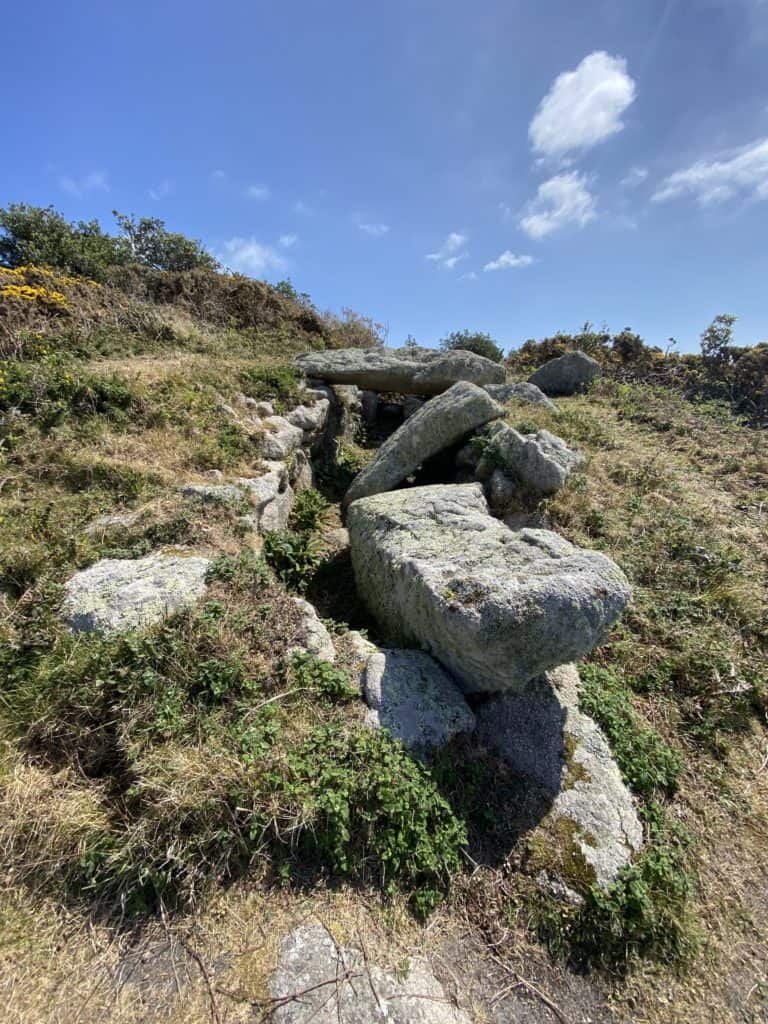
Ancient entrance graves on Gugh -
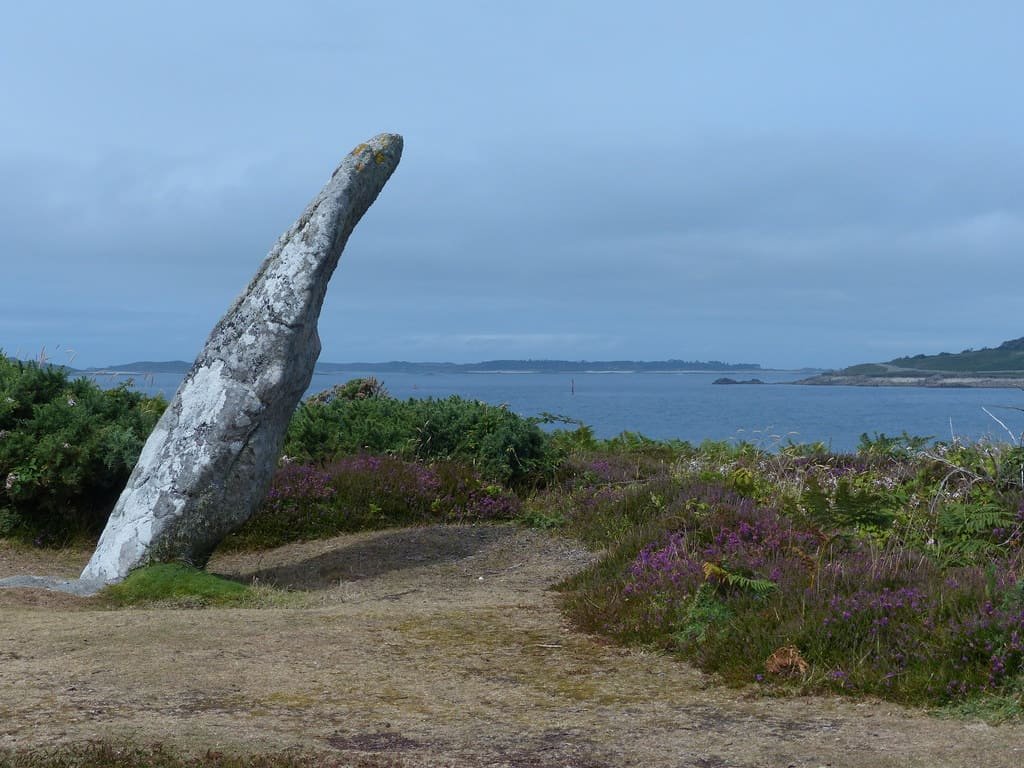
The Old Man of Gugh - an ancient standing stone on Gugh -
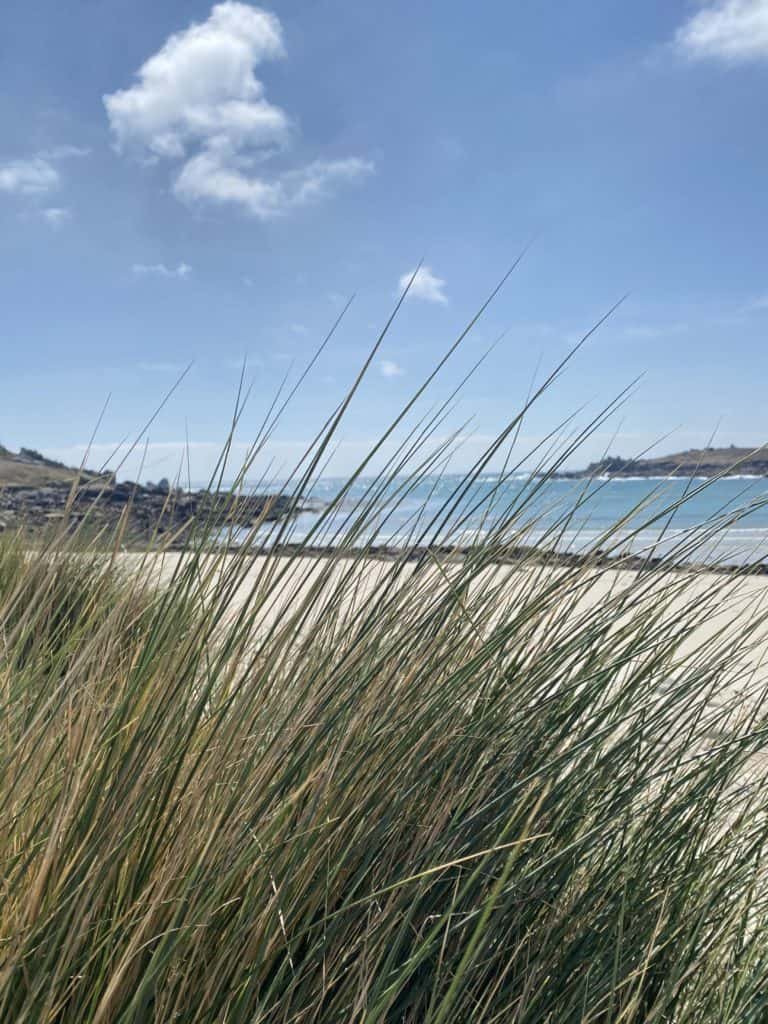
Sea grasses on the beach over to Gugh
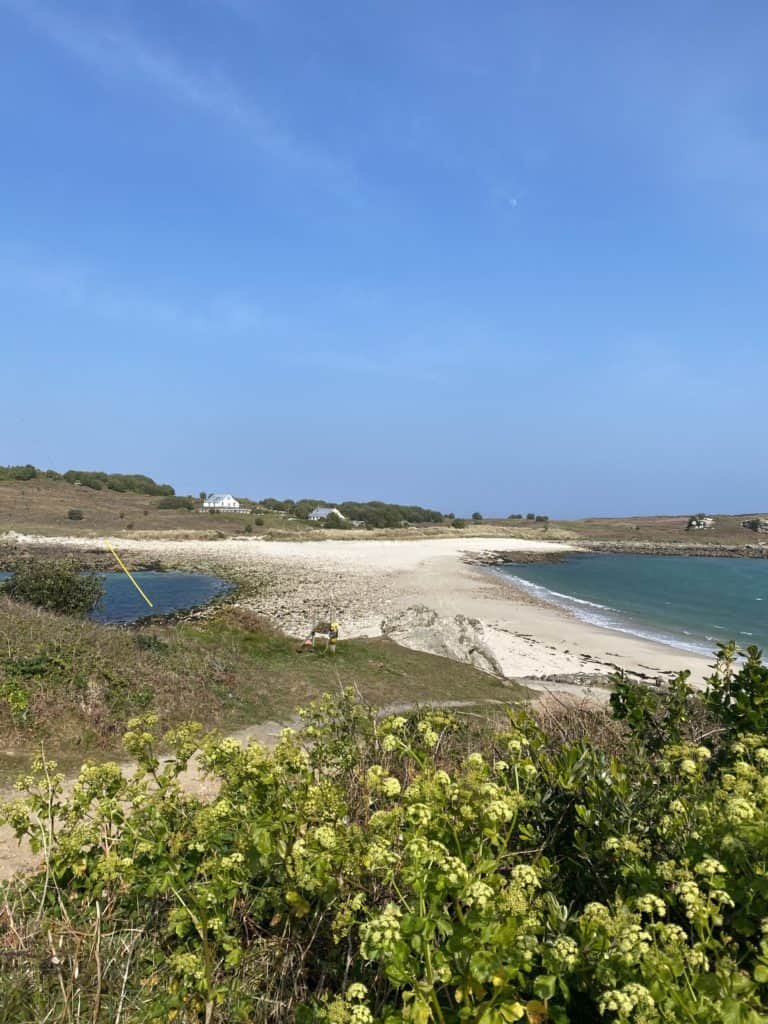
St Agnes Island grows in size every time the tide goes out. It's attached to a much smaller islet called Gugh by a tidal sandbar. When the tide is in, Gugh becomes the smallest inhabited island of all Scilly with three people residing there, but on the ebb it’s absorbed back in to the whole.
Gugh has just two properties, built in the 1920’s by Charles Hamlet Cooper. Other than that it’s a tumble of windswept heath, bramble and rocks with a rugged pathway skirting its edge, skimming past Bronze age cairns and entrance graves. It didn’t take me long to run around the island, slow though I am, but I stopped a number of times to look at the artefacts that I passed.
One notable stone is what’s called a 'menhir'. It's been excavated and sticks 9 feet out of the ground at an angle like a giant’s stone dart, thrown from the sky. Named the 'Old Man of Gugh' it’s a pretty imposing sight to behold. The other graves and cairns just served to remind me what hallowed and ancient land I was standing on, and what history it contained from civilisations past, even so far removed from the mainland.
Bishop Rock Lighthouse
Walking from my cousin’s house down to the coast took all of 2 minutes. I then had to decide which way around I was going to walk the island’s edge. On my first morning I chose to head right and towards the most westerly shore in the UK. Far beyond the edge of the island I could see jagged, treacherous rocks as far as my eye could scan. There, amongst them in the fog stood ‘Bishops’ Rock’, the lighthouse standing tall upon it.
Bishop's Rock lighthouse is the joint-tallest in the UK, the same height as the Eddystone at 49 metres. The island it sits upon is tiny, and in fact is in the Guinness Book of Records still as the world's smallest island with a building on it! In the 13th Century, Scilly was in the hands of a John de Allet (of Allet which is a place near Truro). He is famously reputed to have said of this tiny rock, that anyone convicted of a felony (crime) "ought to be taken to a certain rock in the sea, with two barley loaves and a pitcher of water and left until the sea swallowed him up." To me that seems to be a pretty terrifying way to die, with the full force of the Atlantic weather upon you and no place to shelter!

The Lighthouse Keeper
Bishop Rock lighthouse was first constructed in 1847 but before it could be finished it was washed away. The current building was finished in 1858. A keeper lived inside for many years until the lighthouse became automated. Imagine being so far from any other human and at the mercy of the elements?! The keeper had a small room for living in and a small room above for sleeping in. The rest of the space was for storage and lighthouse equipment. What a life it must have been, but no more - the last lighthouse-man left in 1992. Now there's light automation, electricity and a helipad, and visiting is somewhat easier for those maintaining the light. All the work and sacrifice of the centuries was worth it however. The bright beam of the lighthouse warning ships away from the rocks has saved countless lives.
Island life is addictive
Although my visit to St Agnes was short, it affected me powerfully. I was reminded of what a small, thriving community feels like in these times of remoteness and digital 'everything'. In part 2 of my visit, I'll be sharing tales of St Warna, buried treasure, shipwrecks and an ancient maze circle that still exists today.


